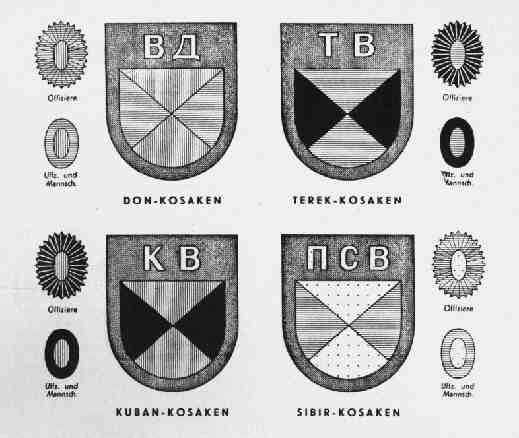One of the less know but bigger foreign combat units of the german army in the ww2.
The first units:
The German Army Group “South” had just completed its conquest of Ukraine by the end of 1941, and was in a striking distance from the home territory of the Don Cossacks. By 22/07/1942, the Axis captured all of the northern banks of the lower Don River; in the coming days they drove deep to the south, in the direction of Caucasus. By the end of that year the front-line extended along the Caucasus range in the south, where it almost reached the borders of Georgia and the outskirts of the city of Ordzonikidze; the Germans managed to occupy almost the entire homeland of Don Cossacks as well as of Kuban Cossacks. Soon the very first local Cossack volunteers began to offer their services to the Germans, with the obvious hope of restoring the past freedoms and honours assigned to Cossacks during Czardom but unceremoniously abolished by the Bolsheviks. Lieutenant Colonel von Freitag-Loringhoven (the Intelligence Officer of Army Group “South”) initiated the recruitment of the first Cossacks in the Cossack homelands, to serve in Cossack units subordinated to the Germans.
One of the first such units was formed from willing Don and Kuban Cossack renegades taken prisoner near Millerovo in southern Russia (in the summer of 1942), when a Wehrmacht Captain named Kandutsch (the Intelligence Officer of the 40-th Panzer Corps) suggested that Cossack collaborators might be useful in guarding of Soviet prisoners-of-war whose large volumes made them difficult to handle while the German combat units were more urgently required for combat duties rather than guarding of prisoners. The Cossacks who enlisted were formed into the Cossack Cavalry Squadron 1/82 of the 40-th Panzer Corps, under the leadership of a Cossack Captain named Zagorodnyy (later a recipient of the prestigious Iron Cross First Class).
After only a few weeks of P.O.W. guard duties, the squadron underwent a month-long training and subsequently it rejoined the 40-th Panzer Corps on the front-lines. It distinguished itself while fighting in the area of Ishcherskaya in the Caucasus (they not only won the trust of Germans with bravery, but also with loyalty as not a single desertion was reported); after the Germans retreated from that region, it accompanied the 40-th Panzer Corps (in the fighting retreat that followed) all the way to the Romanian border, where the whole squadron was ordered to go to France. While in Normandy, the almost entire squadron was decimated in vicinity of Saint-Lo, during a very intensive Allied air raid that spearheaded the Allied landings in the area.
Cossacks in parade with their traditional sabre.












